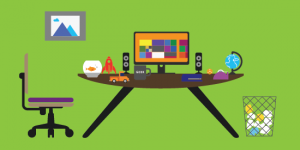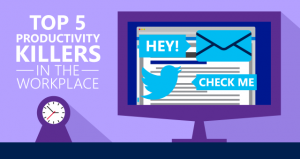
Mindfulness practice has permeated many aspects of Western culture – from stress-reduction therapy to everyday business practices. Mindfulness is an approach to increasing awareness of oneself and one’s surroundings. Mindfulness practice began with Buddhist meditation but is being adapted to fit the more clinical and secular needs of Western treatment centers and workplaces. Here’s how mindfulness is being implemented today and how it could make your workday a little brighter.
Achieving effortless attention
The cornerstone of mindfulness is nonjudgmental observation. It entails perceiving the context of a situation without attaching any emotions to the events unfolding. Much like Zen, which emphasizes the value of meditation and intuition, mindfulness is about eliminating the clutter, finding balance, and getting to the core of what you’re presented with.
Jeremy Hunter, assistant professor at the Peter F. Drucker School of Management, told The Wall Street Journal, “Mindfulness should be at the center of business schools’ teaching … because it is about improving the quality of attention, and in the modern workplace, attention is the key to productivity.” The belief is that attentiveness can be strengthened through mindfulness and meditation practice.
Being in touch with spontaneity
Journalist Warren Berger, who’s written extensively on the subject and talked with various Silicon Valley executives, writes: “Zen practitioners are taught to remain attentive and ‘mindful,’ even during life’s mundane moments—an approach that also helps design researchers and ethnographers gather observations and insights on everyday behavior and needs.” The result is small but pivotal insights that move the individual (or the company) forward.
According to Randy Komisar, a Zen practitioner who’s also a partner with the Silicon Valley venture capitalist firm Kleiner, Perkins, Caufield & Byers, Zen practice “is about stripping away one’s biases, prejudices, blindness. It is about realizing the essence of things.” The belief is that through meditation and mindfulness, people open themselves up to having those a-ha! moments that spark innovation.
Honoring the practice
While Zen meditation and mindfulness can certainly boost mental health, creativity, and productivity, it’s important to remember that’s not the sole purpose of these practices. This dilemma is perfectly captured in The Economist’s Schumpeter column:
“The biggest problem with mindfulness is that it is becoming part of the self-help movement—and hence part of the disease that it is supposed to cure. Gurus talk about ‘the competitive advantage of meditation.’ Pupils come to see it as a way to get ahead in life. And the point of the whole exercise is lost.”
Mindfulness won’t help you crush your competition—but it can help you and your colleagues bring greater clarity to the workday by raising awareness of yourself and your surroundings. To get started, check out this feature piece on mindfulness and business. Begin to integrate elements of these practices into your day whenever possible. Remember, it’s not how much you do; it’s how consistently you do it.



 No one wants to think about what would happen if they contracted a critical illness like cancer or had a major heart attack. However, critical illnesses affect millions of people every day. Take several steps today as you prepare financially for a critical illness.
No one wants to think about what would happen if they contracted a critical illness like cancer or had a major heart attack. However, critical illnesses affect millions of people every day. Take several steps today as you prepare financially for a critical illness. Every business owner is required to carry workers’ compensation for employees. They don’t, however, have to carry this coverage for independent contractors. Which are you? Understanding the rules can ensure you’re protected if you’re injured at work.
Every business owner is required to carry workers’ compensation for employees. They don’t, however, have to carry this coverage for independent contractors. Which are you? Understanding the rules can ensure you’re protected if you’re injured at work.






